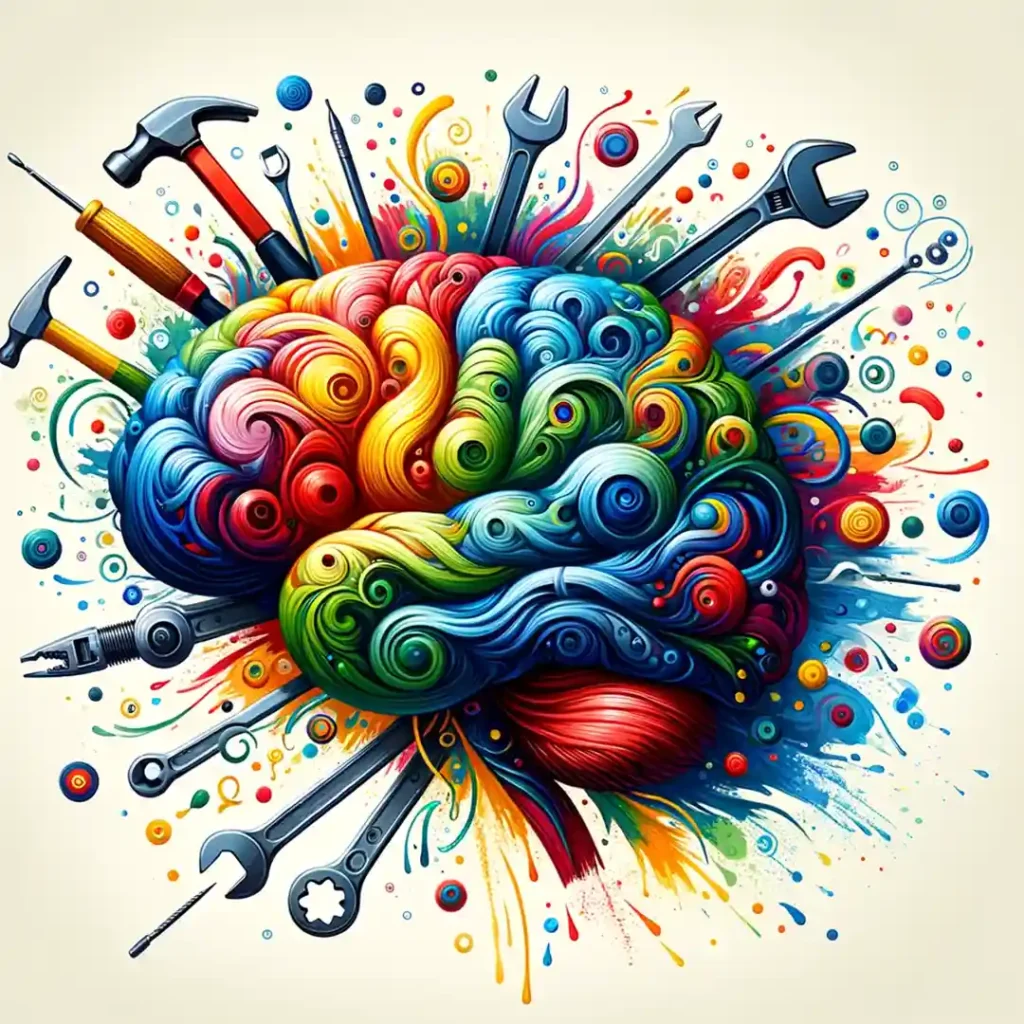In this lesson, we will dive into the fascinating world of neuroscience to uncover how our brain’s response to purpose—our “Why”—can significantly impact our creativity, resilience, and determination. Understanding this connection can be a powerful motivator, helping us see the direct link between our learning, education, and personal goals. Through engaging activities and reflective questions, students will explore how aligning their goals with their deeper motivations not only sets them up for success but also makes the journey more fulfilling. This lesson aims to inspire students to discover their “Why” and realize the transformative power of purpose on their brain and overall achievement.
Learning Goals
- I will be able to explain how the brain’s response to purpose affects creativity, resilience, and determination.
- I will be able to describe the roles of different brain areas in processing motivation and emotion.
- I will be able to identify my own “Why” and understand how it influences my learning and personal goals.
- I will be able to apply knowledge of the brain’s reward system to set and pursue meaningful goals.
Materials
Process
- Begin with a journaling activity. Ask students to reflect on the following: In what ways does your education help prepare you for your big goals? Think of as many ways as possible.
- Distribute and read through The Brain’s Response to Purpose handout with students.
- Have them complete the reflection and questions section.
The Brain's Response to Purpose
When you have a clear “Why” for doing something—whether it’s a personal goal, a project, or a dream—you’re engaging more than just the surface level of your brain. You’re tapping into deep neural networks that involve areas like the prefrontal cortex (the part of the brain involved in planning and decision-making) and the limbic system (which processes emotions).
Increased Creativity: When we’re motivated by our “Why,” the brain’s dopamine levels increase. Dopamine is not just a “feel-good” neurotransmitter; it’s also closely linked with learning, motivation, and, most interestingly, creativity. It enhances our ability to see connections and possibilities by stimulating the brain’s reward pathway. This means when we’re driven by a meaningful “Why,” our brains are essentially primed to think more creatively and come up with innovative solutions.
Enhanced Resilience: Our “Why” also activates parts of the brain associated with emotional processing, like the amygdala and the anterior cingulate cortex. When faced with challenges or setbacks, a strong sense of purpose helps these areas regulate our emotional responses, making us less likely to be overwhelmed by negative emotions. This neurological support helps us bounce back from difficulties more quickly, embodying resilience. Essentially, knowing our “Why” gives our brain a reason to push through adversity, seeing it as a necessary step toward a meaningful goal rather than an insurmountable obstacle.
Bolstered Determination: The neural circuits activated by intrinsic motivation, including those driven by our “Why,” enhance our focus and determination. This process involves the frontal lobes, which are crucial for maintaining attention and suppressing distractions. When we’re genuinely engaged and motivated, our brains are better at allocating resources toward achieving our goals. This means we’re not just more determined; we’re also more effective in our pursuit, and able to concentrate our efforts and energies more efficiently.
The Role of the Brain’s Reward System
Interestingly, the reward system in our brain doesn’t just react to immediate pleasures or rewards. It’s also activated by the anticipation of future rewards, which are often more abstract and tied to our deeper “Why.” This anticipation releases dopamine, encouraging us to take action towards our long-term goals. It’s a sophisticated feedback loop where our brain rewards us for pursuing what matters to us, making the journey towards our goals as fulfilling as reaching the goals themselves.
Neuroplasticity and Our “Why”
Neuroplasticity is what allows our brains to adapt and evolve based on our experiences and behaviors. When we engage deeply with our “Why” we’re not merely pursuing goals but actively molding our brains. This process involves strengthening neural pathways that enhance our ability to innovate, overcome adversity, and maintain focus and drive. Each decision made and action taken in alignment with our purpose acts like a brick, contributing to the construction of a robust foundation for creativity, resilience, and determination.
Over time, as we persistently align our actions with our “Why,” these neural pathways become more pronounced, making such qualities increasingly natural for us. It’s a gradual transformation, requiring continuous effort and dedication. The transformative aspect of neuroplasticity in this scenario provides us with a profound empowerment: the knowledge that we possess the capability to enhance our creativity, resilience, and determination simply through the pursuit of our purpose. Consequently, our brains become not just passive structures but active participants in our journey of personal growth and achievement, adapting to embed these cultivated traits not as mere habits, but as core elements of our identity.
Conclusion
Understanding the science behind why finding our “Why” boosts creativity, resilience, and determination offers a powerful insight: we’re not just passively influenced by our brain’s wiring; we have the power to shape it based on what we deem meaningful. By aligning our goals with our deeper motivations, we not only set ourselves up for success but also for a more fulfilling journey. So, the next time you’re working towards a goal, remember the incredible power of your brain and let your “Why” light the way.
Reflection and Questions
- What does “finding your Why” mean to you, and can you think of a personal goal where understanding your “Why” might help you achieve it?
- Can you identify a situation where you were motivated to do something for the joy of it, rather than for a reward? How did it feel, and what did you learn from that experience?
- How does understanding the science behind motivation, especially the role of neuroplasticity, change the way you think about your abilities and potential?
- If you could share your “Why” with the world, what would it be, and how do you think it could inspire others?
- How do you think finding and following your “Why” can influence your daily habits and decisions, especially in school and learning?


